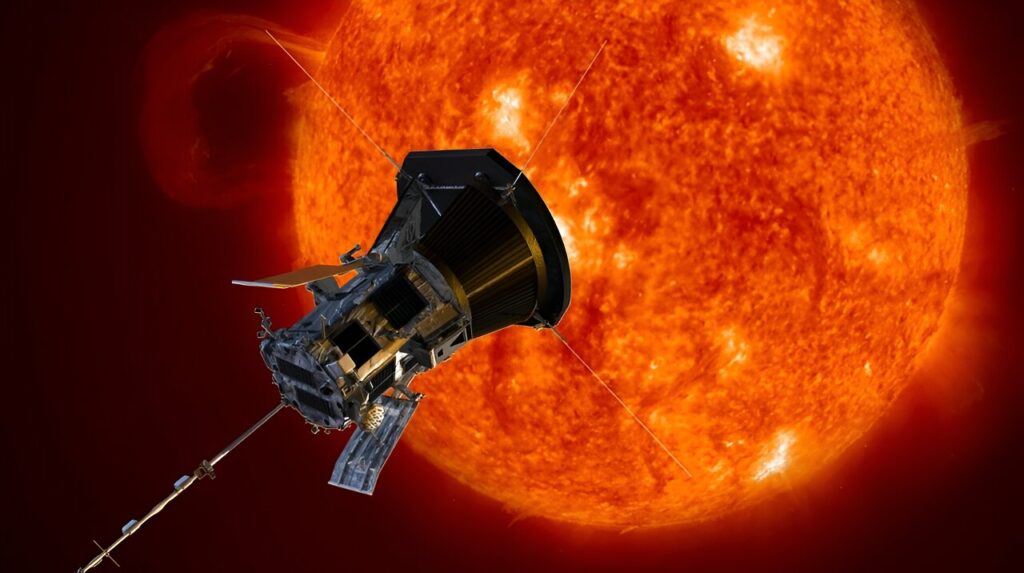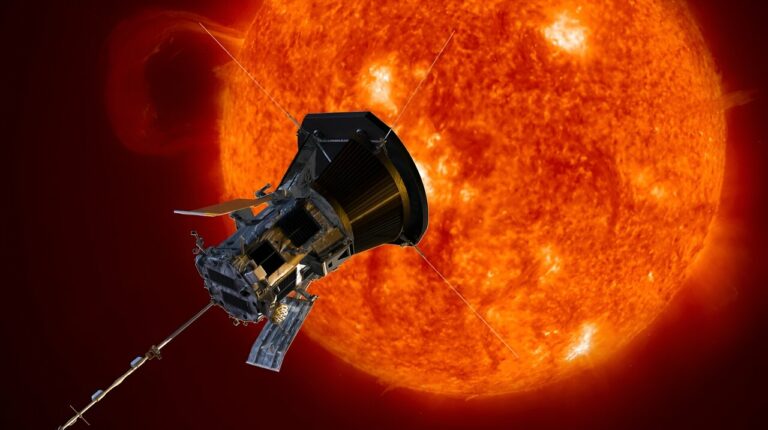A Fresh Theory Explores the Formation of Magnetic Switchbacks in the Solar Wind
A recent study has formulated a theory elucidating the formation of magnetic switchbacks near the sun. This quantitative model has the potential to predict variations in the magnetic field, offering insights into the possible causes of the heating and acceleration of the solar wind. Lead author Dr. Gabor Toth collaborated with Dr. Bart van der Holst at the University of Michigan Department of Climate and Space Sciences and Engineering, and Dr. Marco Velli at UCLA to publish the study titled “Theory of Magnetic Switchbacks Fully Supported by Parker Solar Probe Observations” in The Astrophysical Journal. Magnetic switchbacks denote reversals in the radial magnetic field within the solar wind originating from the sun’s surface.
Initially observed sporadically in the 1970s, recent findings from the Parker Solar Probe identify magnetic switchbacks as a regular component of solar wind fluctuations in the inner heliosphere. While observations from the Parker Solar Probe revealed that these magnetic switchbacks consist of spherically polarized Alfvén waves, the mechanism behind their formation remained elusive until this study. This novel research introduces a straightforward and predictive theory explaining the emergence of these magnetic reversals. The work involved collaboration between researchers at the University of Michigan Department of Climate and Space Sciences and Engineering, along with Dr. Marco Velli, the lead scientist on the Parker Solar Probe mission.
The unexpected revelation in the data transmitted by the Parker Solar Probe after its 2018 flyby challenged previous expectations. Dr. Toth noted, “We expected the radial component of the magnetic field to be roughly constant and the oscillations to be perpendicular to that. But then, the Parker Solar Probe showed it is actually oscillating in the radial direction.”

To explain the phenomena and its underlying causes, Dr. Gabor Toth found inspiration to return to theoretical work after years. His focus shifted to understanding Alfvén waves, originally perceived as perpendicular to the magnetic field, which, due to varying wave speeds, become distorted and oscillate in different directions.
Collaborating with his research team, Toth developed a qualitative and quantitative explanation of this process in the sun’s inner heliosphere. The research combines qualitative descriptions, approximate formulas, and simplified numerical simulations to model the process. The team scrutinized observations to validate their theory, finding strong evidence supporting the occurrence of this process. Utilizing data from the Parker Solar Probe, which offers unprecedented proximity to the sun, Toth analyzed magnetic field measurements, plasma measurements, density, velocity, temperature, and magnetic field variations to inform the research.
The Parker Solar Probe’s goal was to explore how the solar wind is heated and accelerated, challenging existing beliefs. The findings not only enhance understanding of observed phenomena but also have the potential to reshape solar wind models. The Space Weather Modeling Framework, including the Alfvén Wave Solar-atmosphere Model (AWSoM), is actively incorporating this new theory, aiming for improved space weather forecasting and a comprehensive understanding of the solar wind’s intricacies. Two key directions for future work include three-dimensional numerical modeling of switchbacks, expanding the study to incorporate turbulence, and investigating how the formation of switchbacks alters the theory of Alfvén wave heating.
This article is republished from PhysORG under a Creative Commons license. Read the original article.
Do not forget to share your opinion with us to provide you with the best posts !





0 Comments